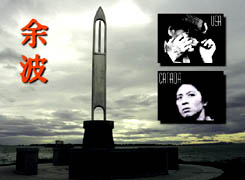|
________________
CM . . . .
Volume VII Number 2 . . . . September 22, 2000


|
Presumed Enemies: The Injustice of the Japanese Internment During WWII.
Created by Selma Wassermann & Jodi Wigmore.
Vancouver, BC: Figaro Educational Software, Inc. (Suite 301-141 Water St., Vancouver, BC
V6B 1A7), 2000.
Mac/Win CD-ROM, $39.95 retail ed., $69.95 School Edition (includes print copy of Teachers'
Guide).
ISBN 0-9686578-0-X
Grades 11 and up / Ages 16 and up.
Review by Joanne Peters.
*** /4
Minimum System Requirements:
Macintosh System 7.5, 25 MHz 68040, 8 MB RAM, 2x CD-ROM
Windows 95, 66 MHz 486, 8MB RAM, 2x CD-ROM, sound card.
|

"Elegant" is not an adjective typically used to describe a CD-ROM, but Presumed Enemies
certainly is. A multimedia curricular resource, the CD skillfully blends photographs, images of
traditional Japanese woodblock prints, QuickTime movies, interviews both with Canadian and
American internees, sound, music, and voice-over narration to tell the story of how Canadian and
American citizens, because of their ethnic heritage, came to be presumed enemies of their
homeland.
The content is divided into six sections: "Japan," providing an historical overview of the 18th and
19th centuries; "Immigration," detailing early 20th century immigration to west coast cities
both in Canada and the United States; "Wars," examining Japanese military involvement during
World Wars I and II; "Internment in Canada" and "Internment in the U. S. A.," both depicting the
response to Pearl Harbour, evacuation, and subsequent life in camps; and finally, "Aftermath,"
examining attempts at repatriation and redress for economic losses, as undertaken by the
governments both of Canada and the United States. Each section culminates with a series of
on-screen questions about the presented content. The questions, rather than focusing on pure
recall, are analytical in nature, and many are open-ended and ask students to take a wide context
approach to the issue. Furthermore, there are nine sets of follow-up studies, activities and
projects (many of which were rather ambitious in scope) which expand beyond the immediate
historical material of Presumed Enemies, and encourage students to think about issues of
injustice or discrimination in other contexts.
There is much to like about Presumed Enemies. It is visually stunning, and the sound and
movies are more than mere "eye and ear candy." They engage the viewer and certainly offer an
opportunity for engagement with the issues of racism, both local and enacted by governmental
policy. The version which I reviewed included a PDF Teachers' Guide (available in print form,
at a higher cost) which provided some ideas as to how the content might be used for study of the
Japanese internment during World War II. Coverage both of Canadian and American experiences
offers some interesting points of comparison and an awareness that the treatment of these people
was not unique to either country.
However, the teaching strategies for the "case study" method, detailed in the Teachers' Guide,
appear to presuppose availability of enough computer stations and enough copies of this
stand-alone CD in order for small groups to work through its content. Furthermore, because
virtually all of the narrative content is delivered through voice-over, head-phones are necessary. I
viewed the CD several times during the course of compiling this review, and it was only after
several viewings that I became really skilled at navigating the disc. Navigation was not entirely
intuitive, even for an individual experienced with a variety of reference products, and, beautiful
though the index screen was, adding more text would make it more user-friendly.
Presumed Enemies is recommended as a supplementary resource for senior high school
Canadian history or Canadian studies classes, as well as American history courses offered at that
level. Pay close attention to the minimum computer system requirements and keep in mind that
"minimum" requirements are just that. I previewed the product on a 40x CD-ROM installed in a
very fast computer with large amounts of memory and it ran very smoothly; slower machines with
less memory might possibly run more slowly. As with all software, preview before purchase, if at
all possible.
Recommended.
Joanne Peters is the teacher-librarian at Kelvin High School in Winnipeg, MB.

To comment on this title or this review, send mail to cm@umanitoba.ca.
Copyright © the Manitoba Library Association.
Reproduction for personal use is permitted only if this copyright notice
is maintained. Any other reproduction is prohibited without
permission.
Published by
The Manitoba Library Association
ISSN 1201-9364
TABLE OF CONTENTS FOR THIS ISSUE - September 22, 2000.
AUTHORS |
TITLES |
MEDIA REVIEWS |
PROFILES |
BACK ISSUES |
SEARCH |
ORDER |
CMARCHIVE |
HOME
|
